As you may have seen, we do a lot of sensory play around here and it is for good reason. There are so many benefits to sensory play. We recognize that sensory play can create a bit of a mess at times but we truly feel that the benefits outweigh the need to clean up the occasional mess. We also set boundaries around how we play. So let’s dive into all the benefits of sensory play and even talk a little more about the boundaries we set in our home.
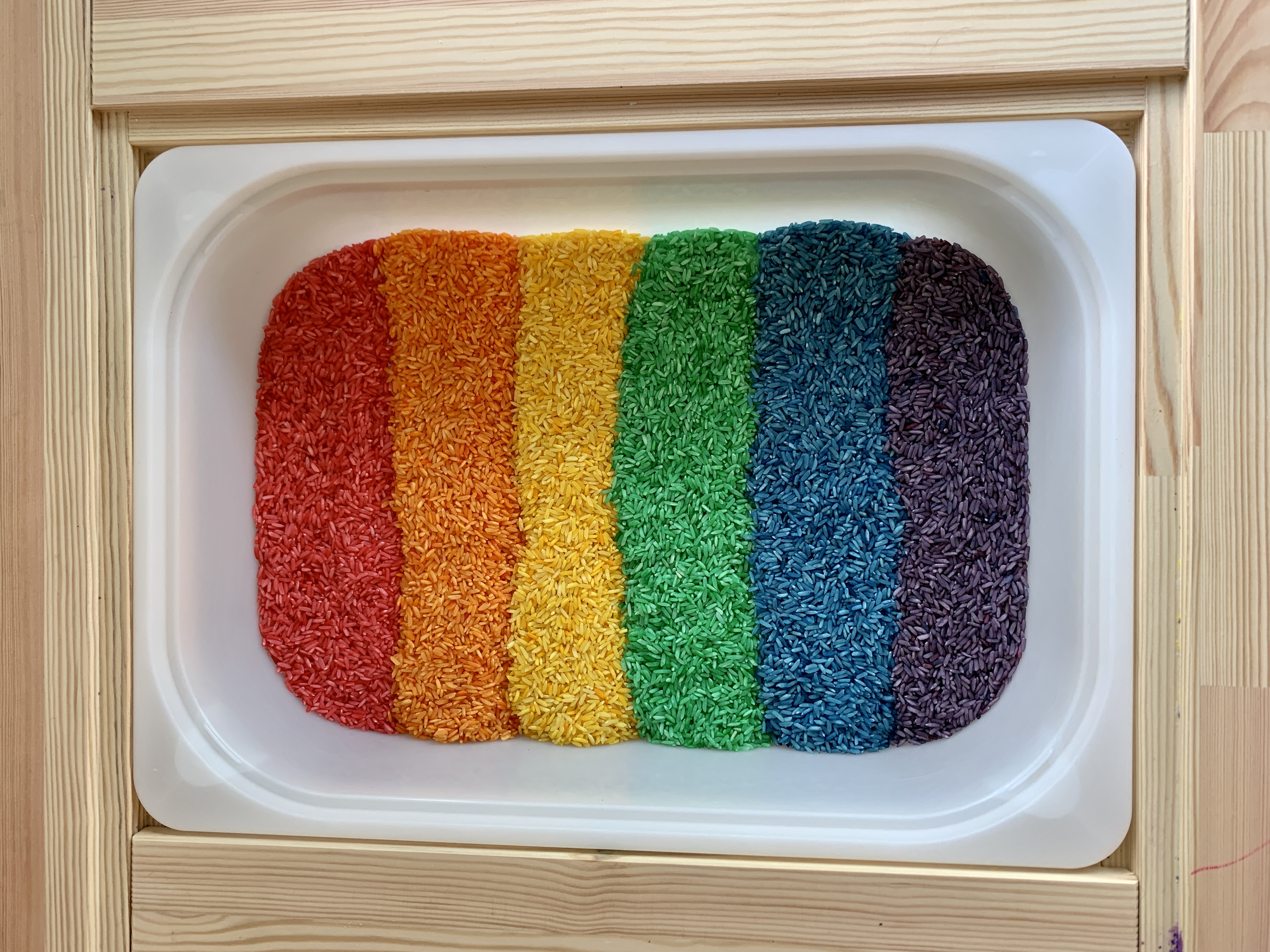
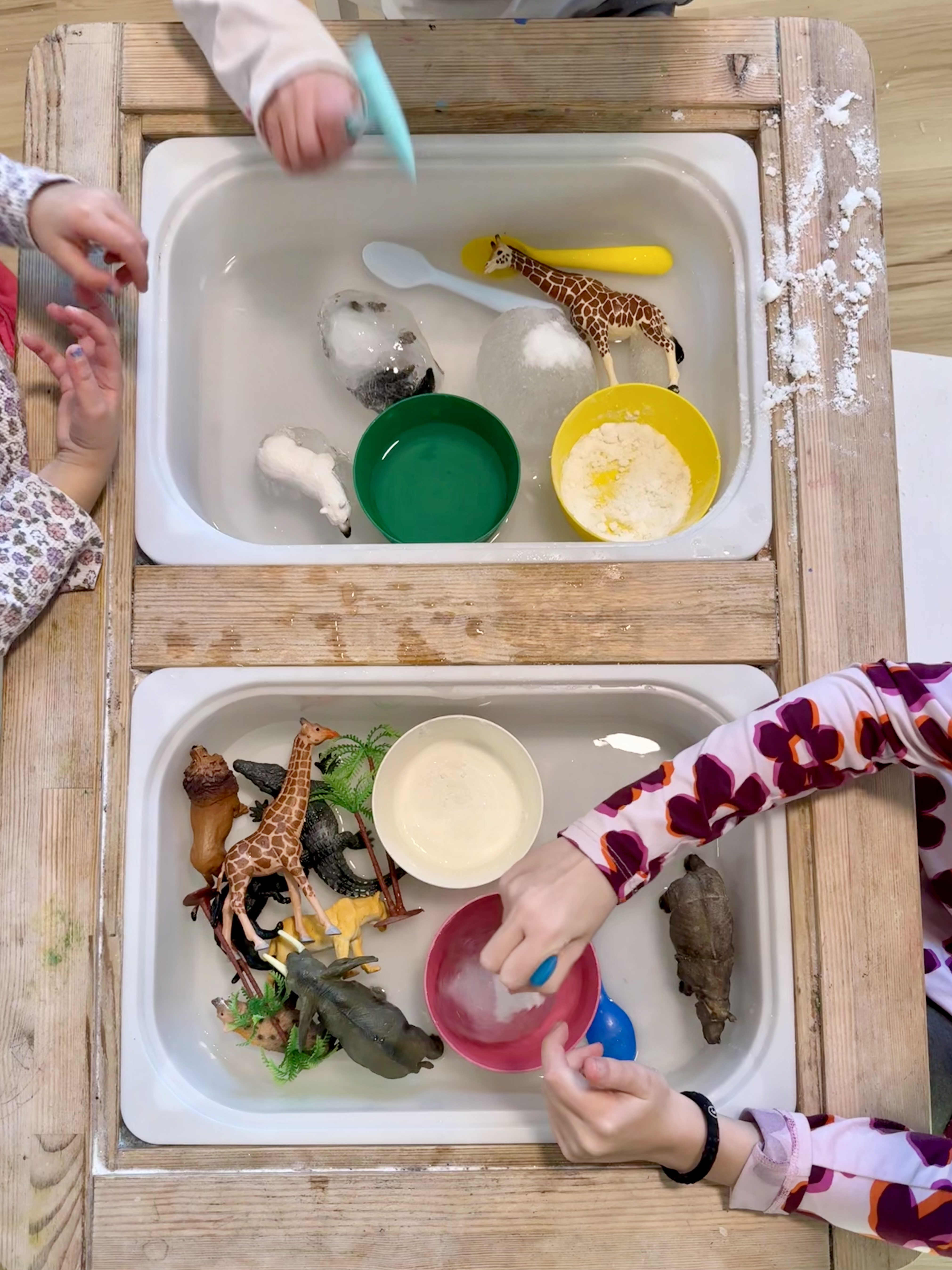
Overall Benefits of Sensory Play
Sensory play is often open-ended, meaning there’s no “right” or “wrong” way to play. This freedom encourages children to use their imagination, experiment with different materials, and develop problem-solving skills on their own. Sensory play allows for children to engage their senses, including: touch, sight, taste, sound, and smell. Not all sensory play will engage all their senses but there is no limit to what sensory play can do. There is also no age limit to sensory play, we have used sensory play since infancy and my school age children might be the most excited when we have a sensory bin out now. Children who engage in sensory play are using creativity, problem-solving, and exploration to play. Sensory play allows for exploring textures, engaging senses, and building a deeper connection and understanding of their surroundings.
Developmental Benefits
By using sensory play from a young age, we help to foster many developmental benefits. Using our senses allow us to interact and explore the things around us and to help with developing social and emotional connections. It helps us to be more cognitively aware of our surroundings and different aspects of it.
There are many areas of development that benefit from sensory play, including: cognitive, gross and fine motor skills, and social and emotional skills.
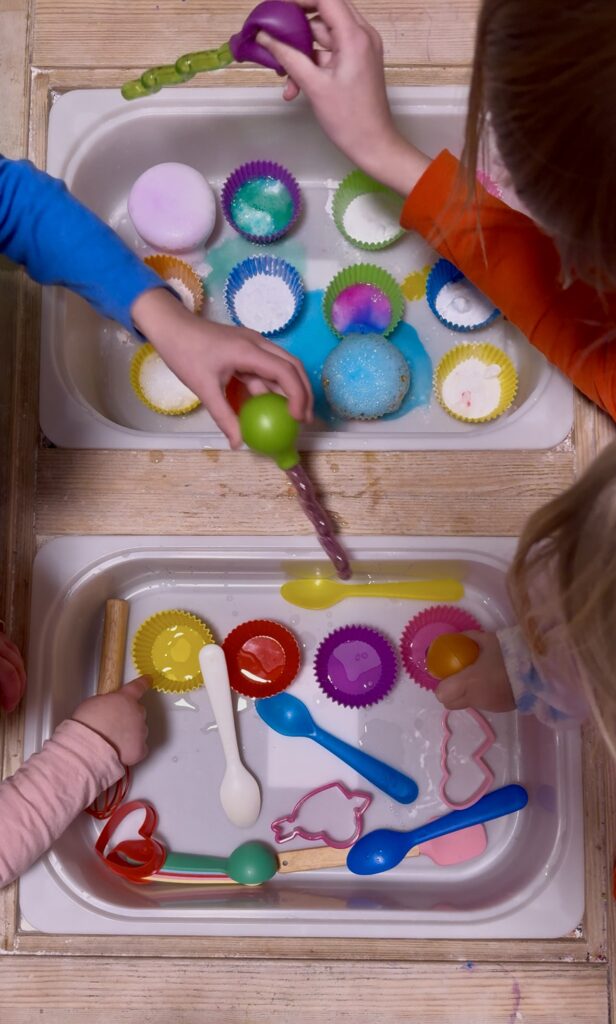
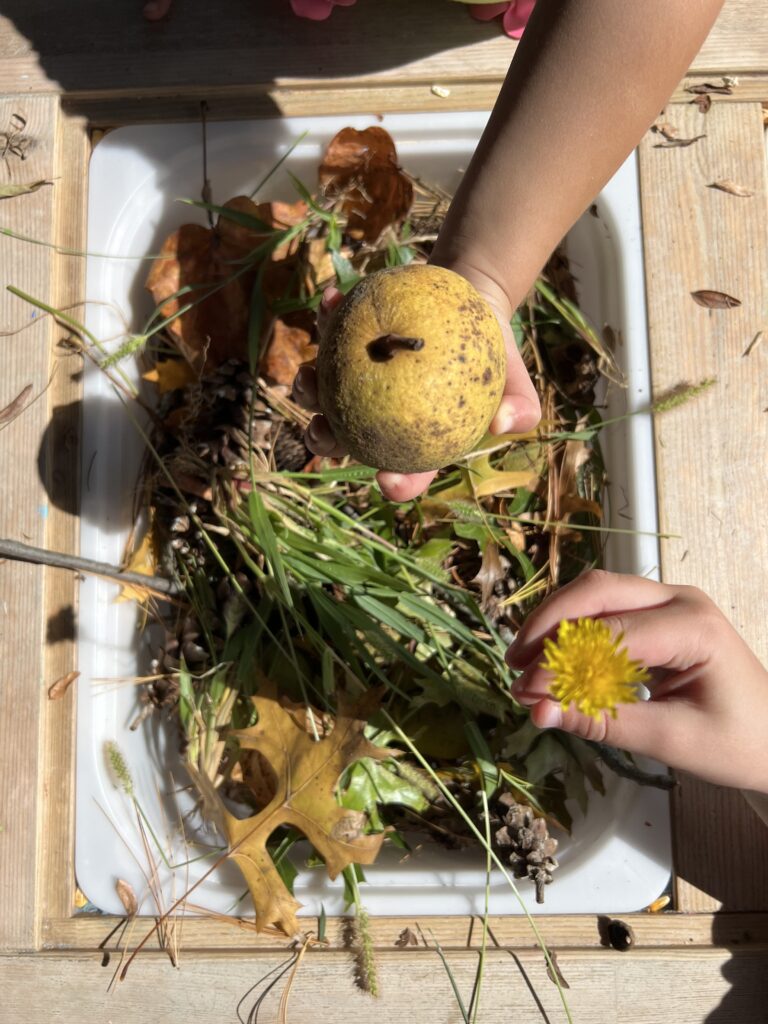
Cognitive Development
Sensory play stimulates brain growth by encouraging children to explore, experiment, and problem-solve. Sensory play helps to improve attention span (need I say more?), categorize by color, recall information, aid in organizational skills. It helps with problem-solving skills and encourages skills to find solutions. It also allows for kids to learn about textures and uses of different toys and tools. Sensory play is a safe place to explore within boundaries.
Fine and Gross Motor Skills
Sensory play helps to build both fine and gross motor skills. Fine motor skills are improved through scooping, pinching, grasping, and pouring. This helps them to interact physically and build strength and coordination. Using specific tools helps to strengthen those hand muscles. This all leads to better coordination and muscle strength which helps with skills like using scissors, holding a pencil, and even tying their shoes.
Sensory play also helps with gross motor skills as well. Things such as building, jumping, climbing, and digging work more muscles. This can happen in places like a mud kitchen or even the sandbox.
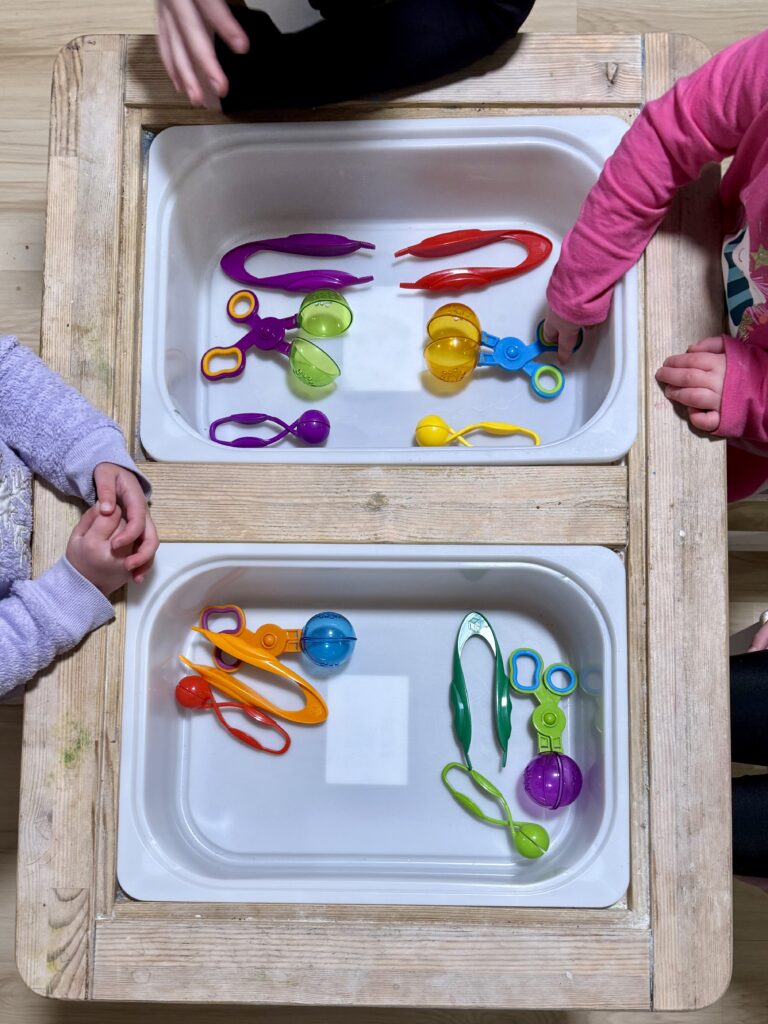
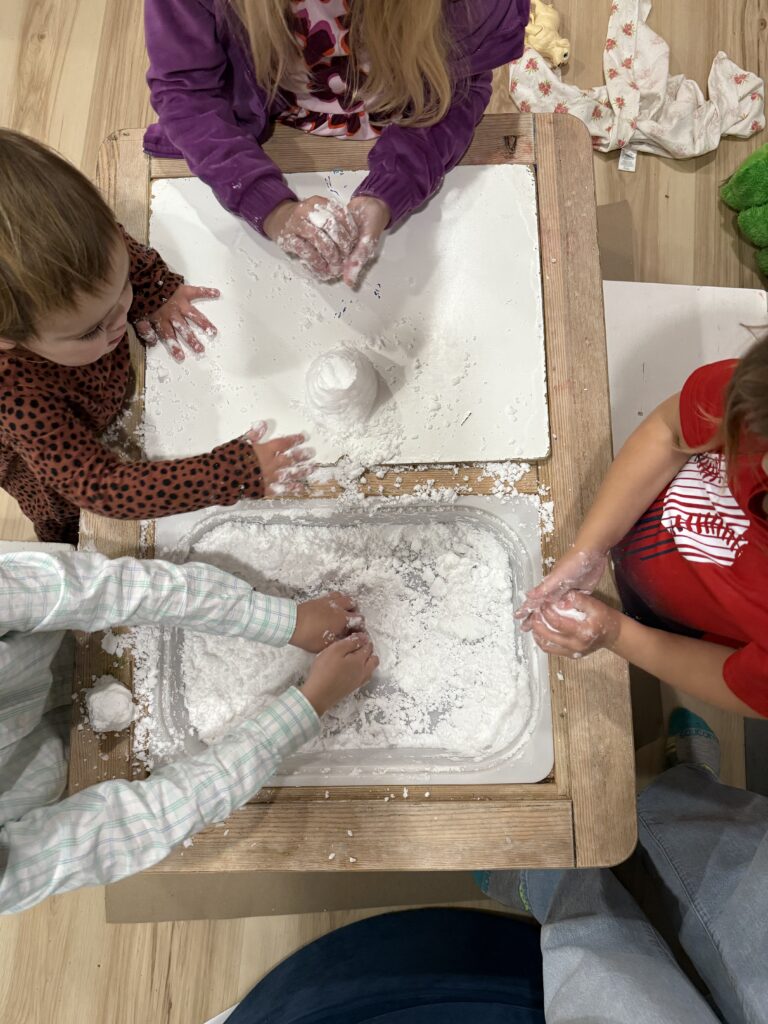
Social and Verbal Skills
Through sensory play, children naturally communicate. They describe what they are experiencing. This in turn encourages story-telling and interaction. They also can utilize play to help express themselves, which can increase their confidence. It will help children to expand their vocabulary and their expressive language skills.
Using sensory play with others can help to build cooperative skills, as well as collaboration. It also can help them to learn to follow directions and interact with those around them. It helps children to understand how their actions impact their environment and those around them. When children engage in sensory play together, they practice taking turns, sharing materials, and working collaboratively.
Emotional Skills
Sensory play allows for children to express themselves. It also allows for an outlet for strong emotions and can help to redirect their emotional energy, have them step back and take a deep breath. Engaging in repetitive, hands-on activities can reduce anxiety, relieve stress, and provide a safe outlet for self-expression. It also encourages a positive association with play.
We use sensory play many times when we have harder conversations to have with our children. An example was this fall when we needed to talk about breast cancer impacting a family member and the treatments that would follow. We made a sensory bin and then allowed the children to explore and play while they asked questions and processed the information and diagnosis.
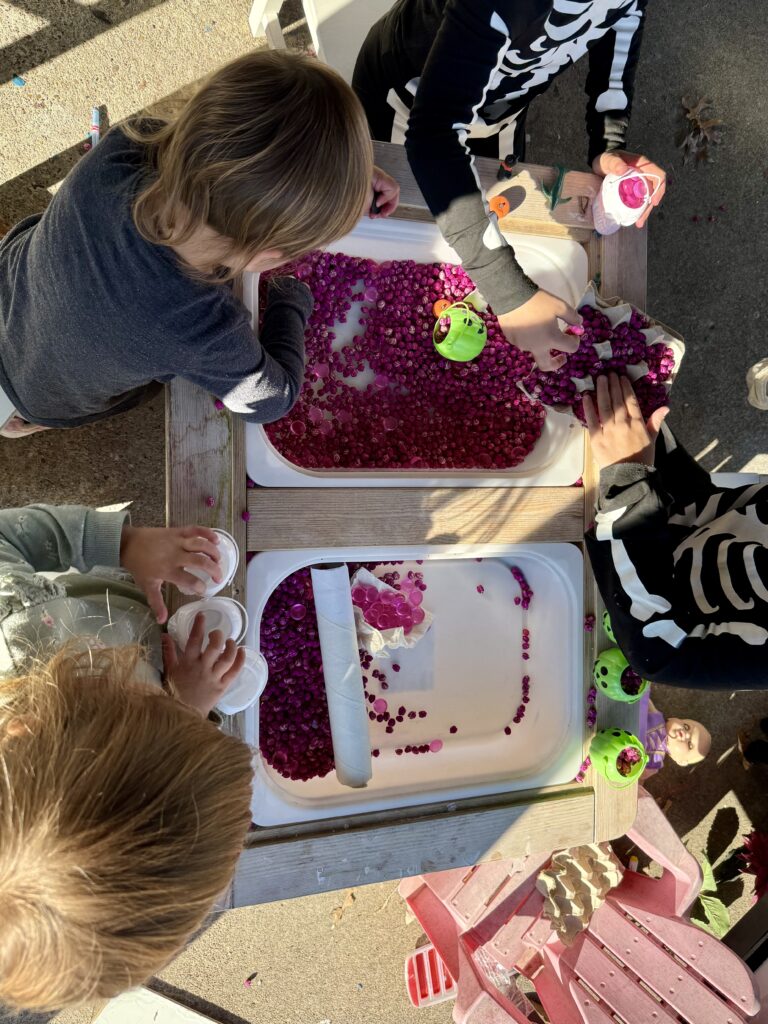
Simple Sensory Play Ideas
Sensory Bins
As you may have noticed this is by far our favorite way to utilize sensory play. We put stuff in our sensory bin almost every week. Typically, we also let our sensory items live in the bin for multiple days before either putting it away or switching it out.
We have a very specific sensory bin in our house but it does not need to be anything special. You can see the sensory bin that we built here. We also live for our Ikea sensory table.
Playdoh and Modeling Clay
We frequently play with Playdoh or Modeling Clay. This play allows for creativity to flow but it also helps to build so much muscle strength and fine motor skills. Think of all the pulling, shaping, and squeezing they need to do to create the shapes they want to make! This can also build their hand eye coordination! We try to steer away from slime here but it also provides the same benefits.
Water Play
Water play is always a fan favorite here. We obviously use it more frequently in the summer but it can be just as enjoyable in the winter. Water play allows for exploration and coordination. Usually, we have scoops, cups, sponges, and bowls. This allows for lots of pouring and scooping, we even get crazy with some squeezing and splashing. We actually use water a lot for science, think floating and sinking and freezing and melting.
Boundaries
Since sensory play can clearly come with some challenges, we have set very specific boundaries in our house. When we first expose our children to sensory play, it does require a lot of oversight but I promise it is worth the payback. For starters, I tend to need to sit with them for the first 3-4 times we explore with sensory play. The rules are simple, the materials need to stay in the bin. This is not necessarily going to mean that there is no clean up and accidents don’t happen. Rather, this means that we do not intentionally throw the materials, we try hard not to play on the edge where dropping everything is more likely to happen.
Some days, we find that it is harder to follow the boundaries and either one child will specifically need to be redirected or even removed from the play. Other times, the sensory play just needs to be put away. After following these strict boundaries multiple times and kids realizing they will be removed, they quickly follow the rules. This is what allows us to set up and keep sensory play out for weeks on end.
Benefits of Sensory Play
Sensory play is a simple yet powerful tool for child development. Whether it’s helping with motor skills, language growth, emotional regulation, or creative thinking, these activities offer countless benefits for children of all ages. Best of all, sensory play is easy to set up, engaging, and a great way for kids to learn through play!

[…] it extends their play time. Their attention span is longer, they can listen and do crafts or play sensory for so much longer! The Yoto lives in their room which is great because they can retreat to their […]